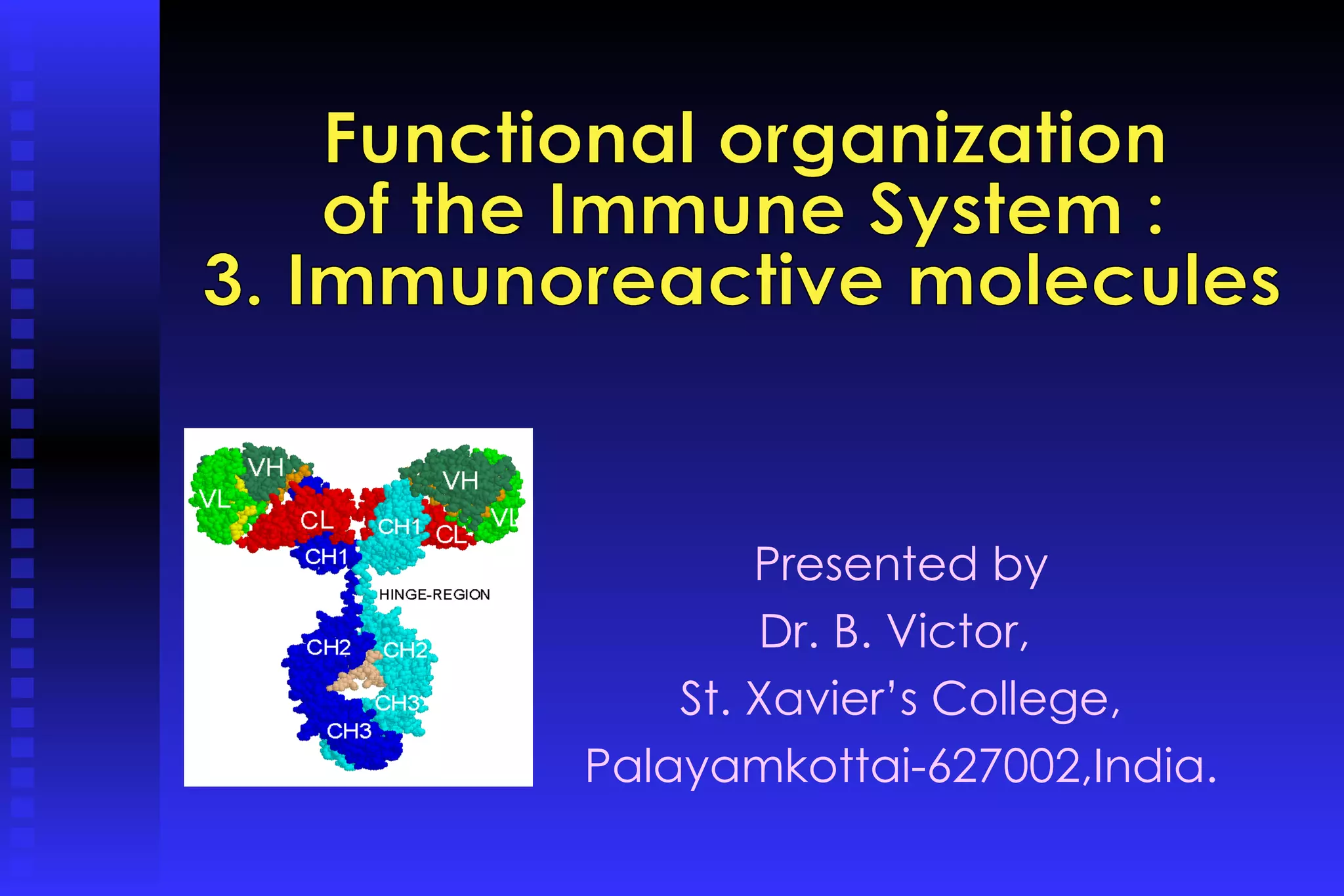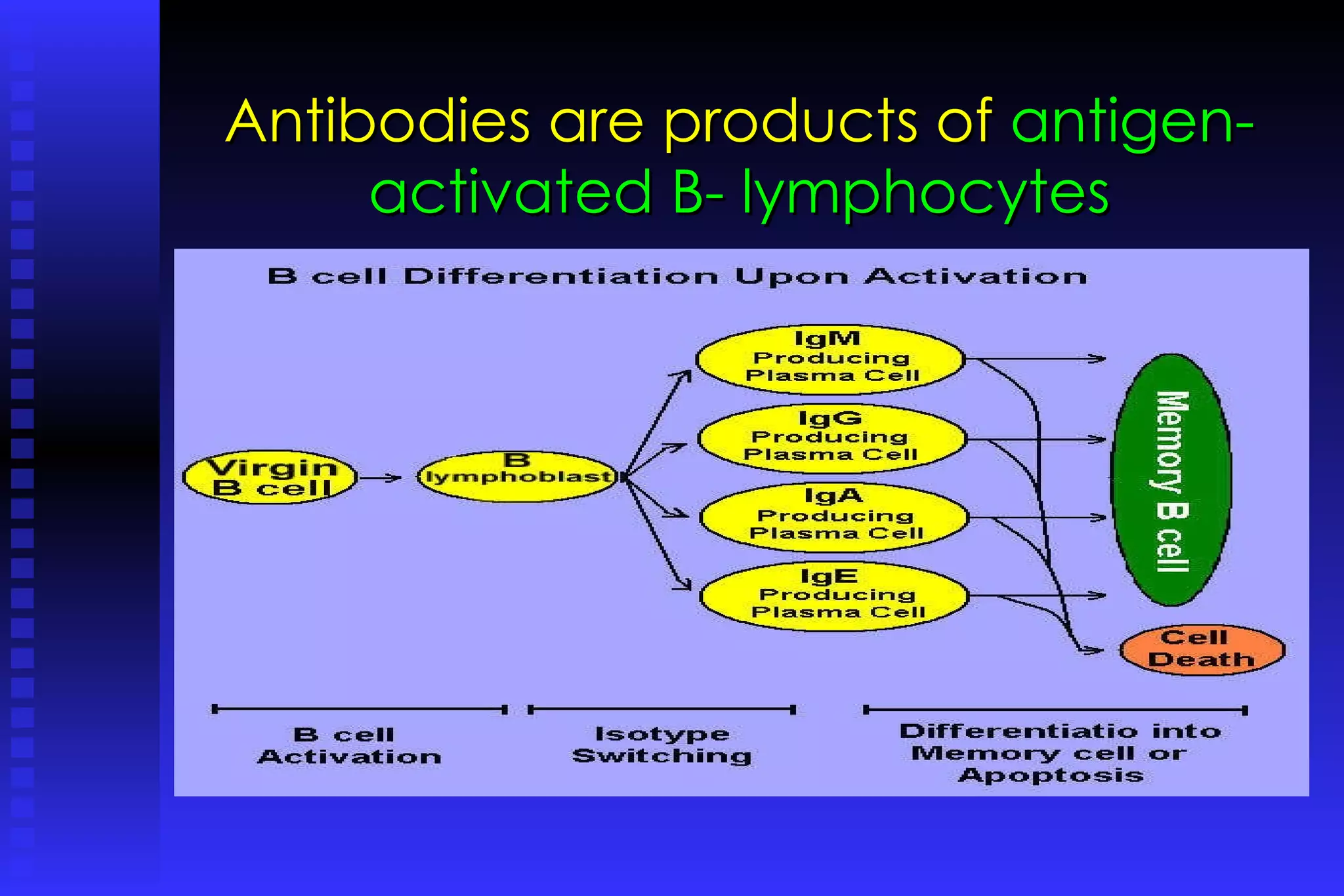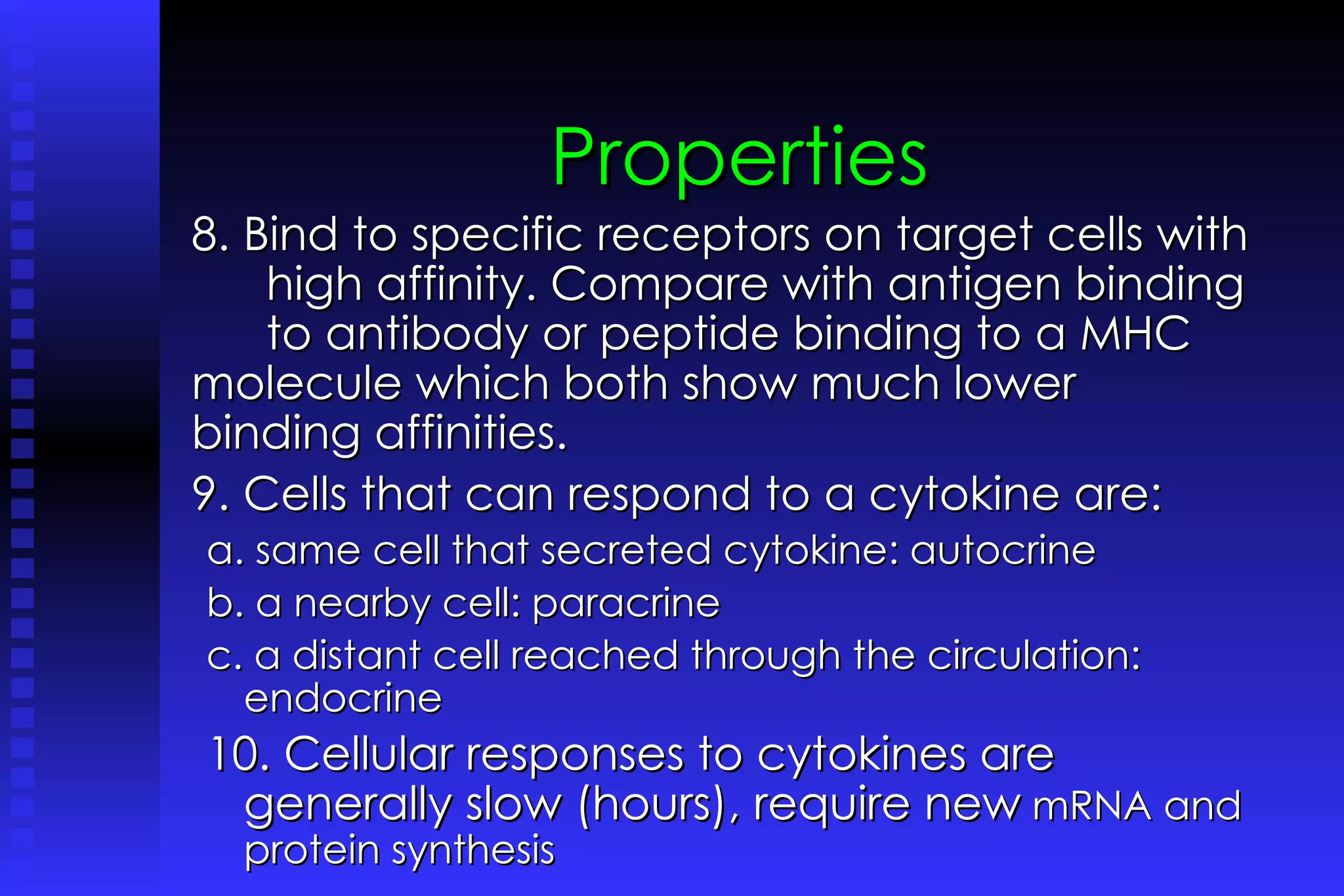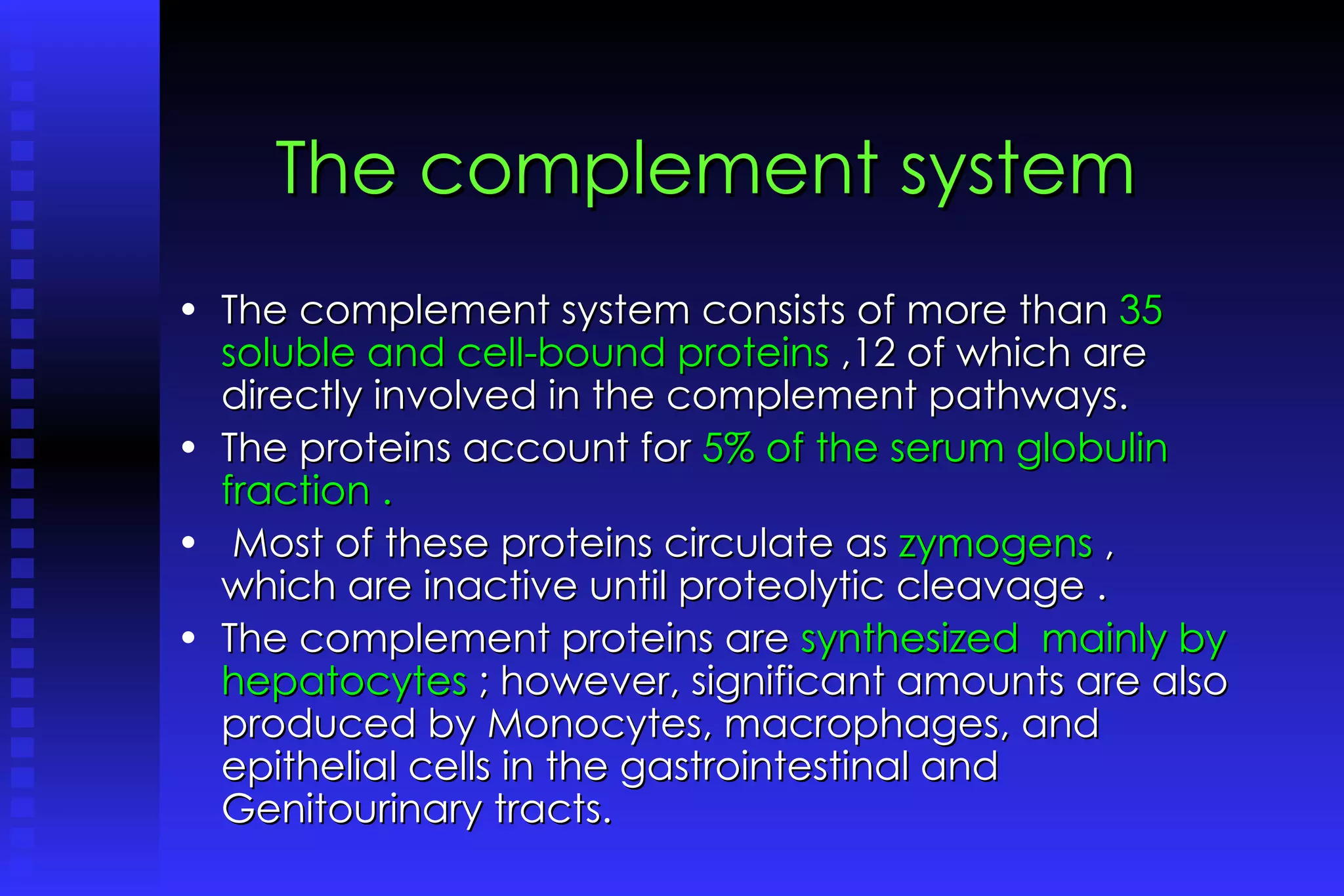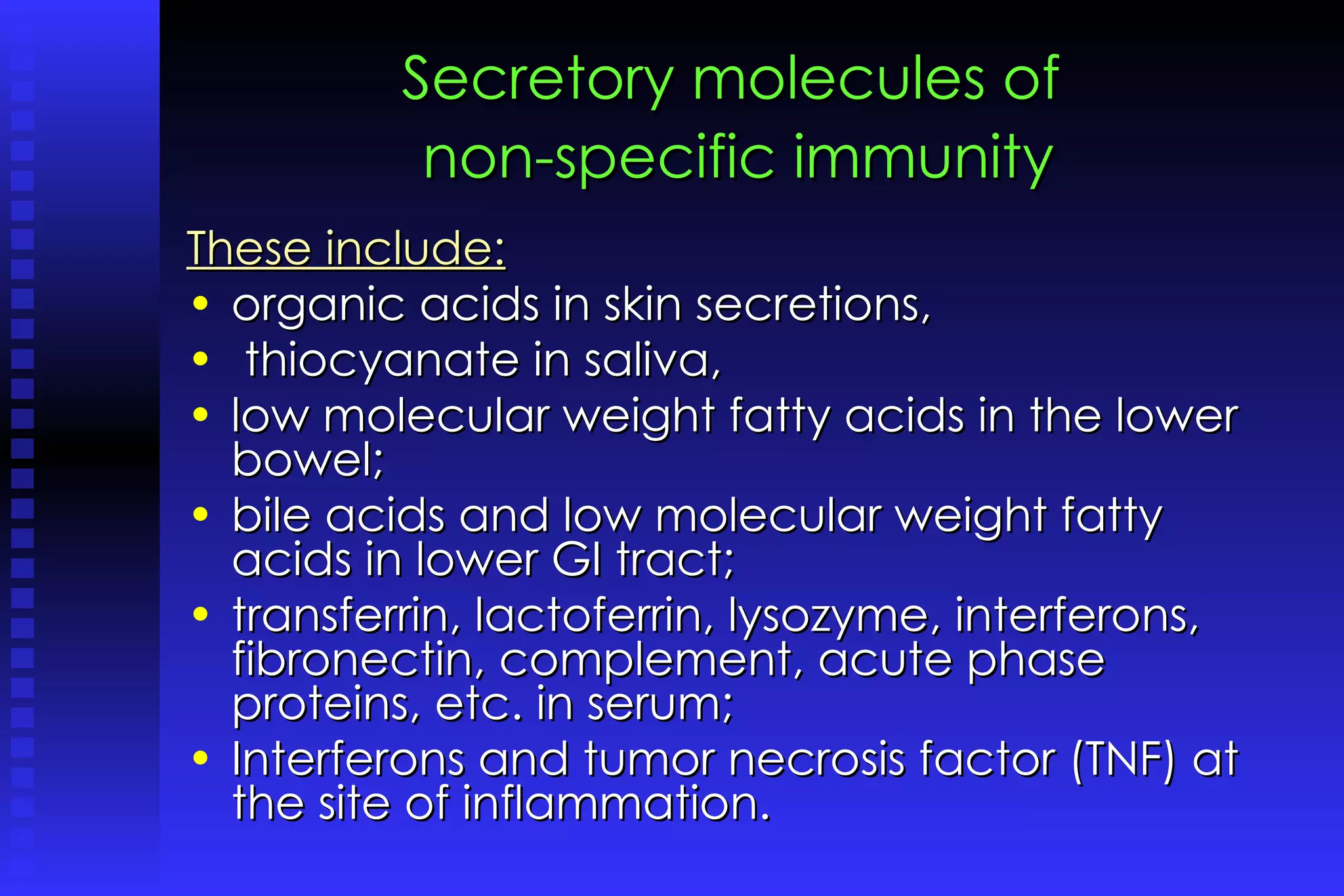The document summarizes key aspects of the immune system, including immunoglobulins, cytokines, and the complement system. It describes:
1) Immunoglobulins (antibodies) are Y-shaped proteins produced by B cells that bind to antigens with high specificity. The five major classes in humans are IgG, IgA, IgM, IgE, and IgD.
2) Cytokines are signaling proteins like interleukins and interferons that are produced by immune cells and regulate immune responses. They activate and attract immune cells.
3) The complement system is a group of proteins that promote inflammation and mark pathogens for destruction. It consists of over 35 proteins and operates through classical
